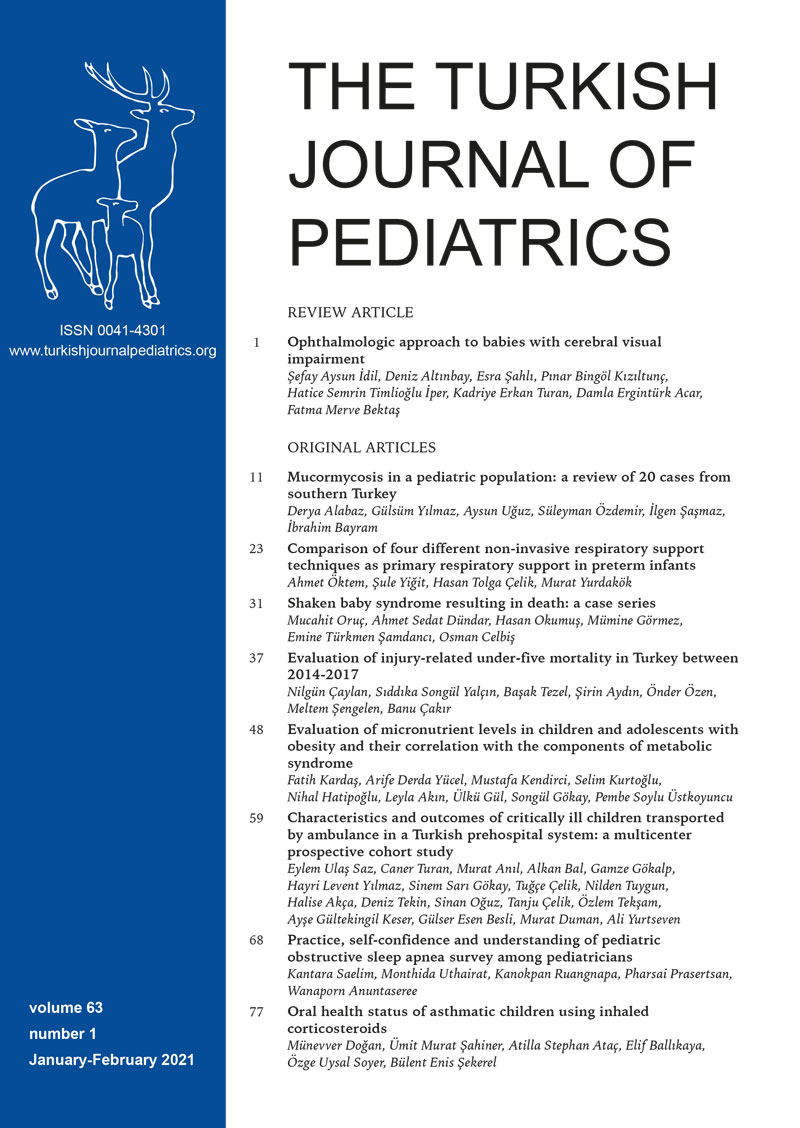Abstract
Background. We aimed to investigate the relationship between human leukocyte antigens (HLA)-groups and clinical features, and degree of intestinal injury in children with celiac disease (CD).
Methods. Study group included 73 (50 females, 68.5%) children with CD. Demographic and clinical features, accompanying autoimmune diseases, family history for CD and degree of damage in small intestinal mucosa (according to Marsh classification) at the time of diagnosis were determined. Twenty-two siblings of celiac patients without CD (15 females, 65.2%) consisted control group 1, and 66 (40 females, 60.6%) people from the normal population consisted control group 2.
Results. The allele frequencies of HLA B8, B50, C6, C7, DR3, DR7, DQ2, and DR3 homozygosity were higher in the patient group. HLA DQ2 positivity was 89% in the patient group, 73.9 and 45.5% in control groups 1 and 2, respectively (p < 0.0001). HLA A30, C14, DR11, DQ3 frequency were lower in patients compared to both control groups. HLA-DR15 alleles in patient and control group 1 was significantly lower compared to the general population (p < 0.05). Thirty (41.1%) patients had typical, 43 (58.9%) patients had atypical presentation. Thirteen (17.8%) patients had other autoimmune diseases. There was no association between coexisting autoimmune diseases and the HLA antigens. Fifteen patients (20.5%) had a positive family history for CD; patients with HLA A69, B41 and C12 alleles had a higher positive family history (p < 0.05). Intestinal mucosal damage was as follows: 5 patients (6.8%) had Marsh 2, 25 (34.3%) Marsh 3a, 28 (38.4%) Marsh 3b, 15 (20.5%) Marsh 3c. Patients with HLA-DR15 alleles had more frequent Marsh 3a lesions (p < 0.05).
Conclusions. B8, B50, C6, C7, DR3, DR7, DR3/DR3, DQ2 alleles were risk factors for CD in the Turkish population. HLA C14, DR11, DR15, and DQ3 alleles were found to have a protective role in the same population.
Keywords: HLA typing, Turkish, celiac disease, histopathology, pediatric
Copyright and license
Copyright © 2021 The Author(s). This is an open access article distributed under the Creative Commons Attribution License (CC BY), which permits unrestricted use, distribution, and reproduction in any medium or format, provided the original work is properly cited.














